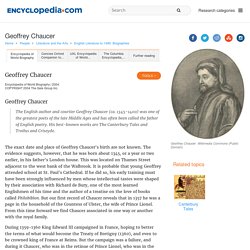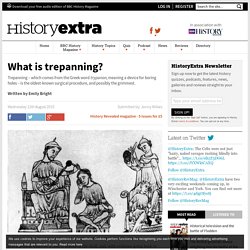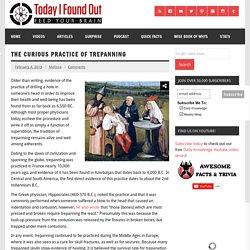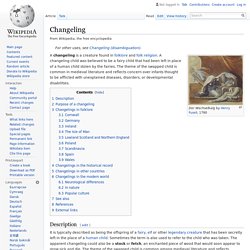

Monika
Geoffrey Chaucer Facts, information, pictures. The English author and courtier Geoffrey Chaucer (ca. 1345-1400) was one of the greatest poets of the late Middle Ages and has often been called the father of English poetry.

His best-known works are The Canterbury Tales and Troilus and Criseyde. The exact date and place of Geoffrey Chaucer's birth are not known. The evidence suggests, however, that he was born about 1345, or a year or two earlier, in his father's London house. This was located on Thames Street adjacent to the west bank of the Walbrook. It is probable that young Geoffrey attended school at St. During 1359-1360 King Edward III campaigned in France, hoping to better the terms of what would become the Treaty of Bretigny (1360), and even to be crowned king of France at Reims.
Chaucer's Marriage After 1360 we lose sight of Chaucer for several years. Trepanning: the oldest surgical procedure in history. Trepanning – which comes from the Greek word trypanon, meaning a device for boring holes – is the oldest-known surgical procedure, and possibly the grimmest.

Written by Emily Bright Wednesday 12th August 2015 Submitted by: Jonny Wilkes A medieval surgeon performs a trepanning operation, c1350. (Photo by Hulton Archive/Getty Images) It is a process whereby a hole is drilled in the skull, and, with evidence going back to prehistoric times, it is one of the oldest surgical practices in history. It may have had a practical effect – to relieve pressure on the skull after an injury – but it could have also been used to give a trapped demon a hole to escape, or was so believed. The Curious Practice of Trepanning. Older than writing, evidence of the practice of drilling a hole in someone’s head in order to improve their health and well-being has been found from as far back as 6,500 BC.

Although most proper physicians today eschew the procedure and write it off as simply a function of superstition, the tradition of trepanning remains alive and well among adherents. Dating to the dawn of civilization and spanning the globe, trepanning was practiced in France nearly 10,000 years ago, and evidence of it has been found in Azerbaijan that dates back to 4,000 B.C. In Central and South America, the first direct evidence of this practice dates to about the 2nd millennium B.C.
The Greek physician, Hippocrates (460-370 B.C.), noted the practice and that it was commonly performed when someone suffered a blow to the head that caused an indentation and contusion; however, he also wrote that “those [bones] which are most pressed and broken require trepanning the least.” Expand for References. 10 Bizarre Medieval Medical Practices. Creepy Medicine is one of the cornerstones of modern civilization—so much so that we take it for granted.

It wasn’t always the case that you could just waltz into a doctor’s office to have them cure what ailed you. In medieval times, for example, things were a lot more dangerous, and a lot stranger. 10 Boar Bile Enemas Enemas in medieval times were performed by devices called clysters. Even kings were high up on the clyster. 9 Urine Was Used As An Antiseptic Though it may not have been common, there is evidence to suggest that urine was occasionally used as an antiseptic in the Medieval Era.
This isn’t quite as insane as it seems: urine is sterile when it leaves the body and may have been a healthier alternative than most water—which came with no such guarantee of cleanliness. 8 Eye Surgery (With A Needle) During the Middle Ages, cataract surgery was performed with a thick needle. Of course, eye surgery changed rapidly once Islamic medicine began to influence European practices. Changeling. A changeling is a creature found in folklore and folk religion.

A changeling child was believed to be a fairy child that had been left in place of a human child stolen by the fairies. The theme of the swapped child is common in medieval literature and reflects concern over infants thought to be afflicted with unexplained diseases, disorders, or developmental disabilities. Description[edit] It is typically described as being the offspring of a fairy, elf or other legendary creature that has been secretly left in the place of a human child. Sometimes the term is also used to refer to the child who was taken. D. 10 Completely Uncanny Superstitions From The Middle Ages. Weird Stuff In the pre-scientific Middle Ages, the world was at the same time both fascinating and frightening.

In the absence of proper knowledge, people had no choice but to fall back on their own imaginations to make sense of the myriad natural phenomena around them. The result was a world where everything seemed magical, a place teeming with angels and demons, fairies and goblins, elves, gnomes, and witches. This list takes us inside the medieval mind and the fears and superstitions through which it tried to explain the world. 10 The Sea In The Sky For this story, we are indebted to English chronicler Gervase of Tilbury and his work Otia Imperiala. For proof, Gervase offers an episode that took place in an English village. Another tale concerns a merchant who accidentally dropped his knife while out at sea. 9 Omens Of Charlemagne’s Death.